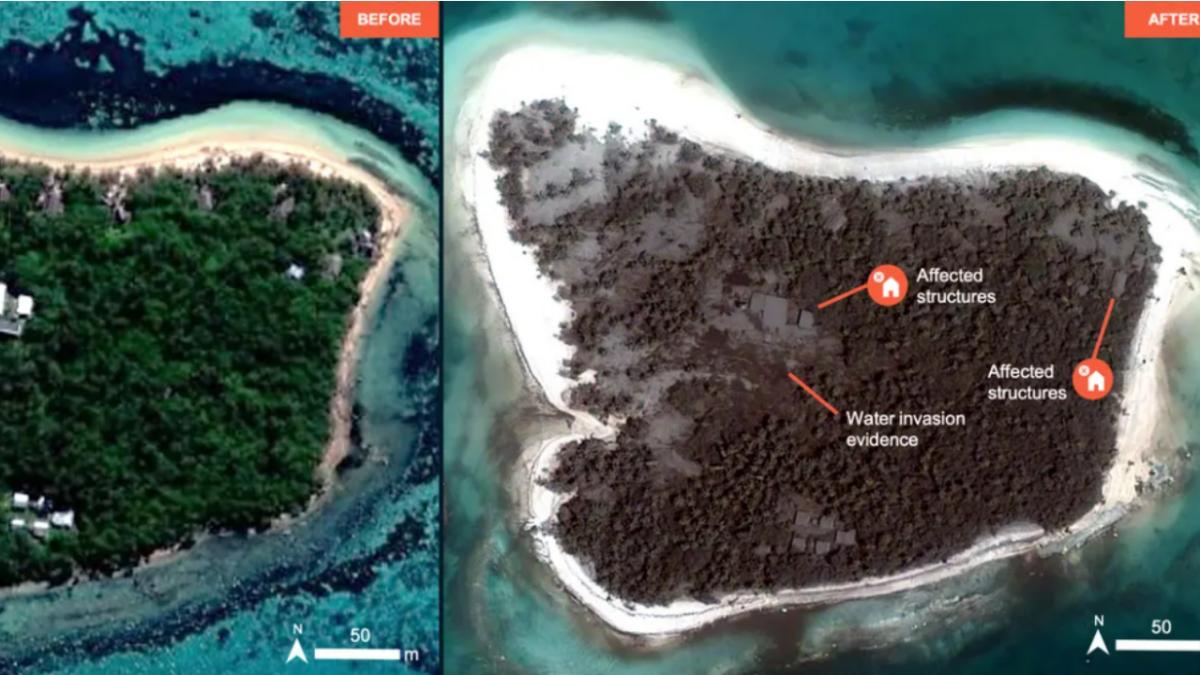
An underwater volcano erupted in Tonga on Saturday, triggering tsunami warnings across the world including in Australia.
Two deaths have been reported. But with all phone lines and internet disconnected, the damage to Tonga and surrounding Pacific islands is yet to be assessed.
The first satellite photos of the aftermath, as well as aerial shots from the first surveillance flights, were released on Tuesday, showing some of the damage.
Experts are warning more eruptions could be on the way, but it’s hard to know what it’s like on the ground, or what’s yet to come.
Here’s what we know so far.
The situation in Tonga
New Zealand has reported that parts of the Tongan capital Nuku’alofa suffered “significant” damage, and two deaths have been reported as of January 18. One has been identified by family as Angela Glover, a British charity worker living in Tonga. Tongan authorities have not yet confirmed either death.
The first images from by the United Nations Satellite Centre (UNOSAT) as well as New Zealand Defence flights have been released, showing evidence of tsunami damage, flooding and land blanketed in volcano ash.
UNOSAT said it surveilled 104 structures and 41 were identified as damaged, as well as roads and trees on several islands.
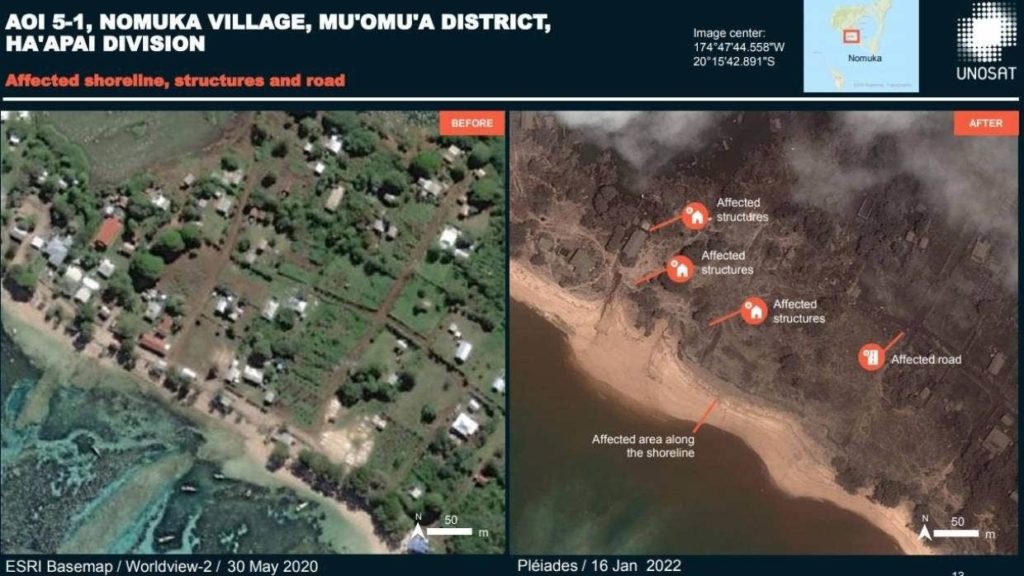
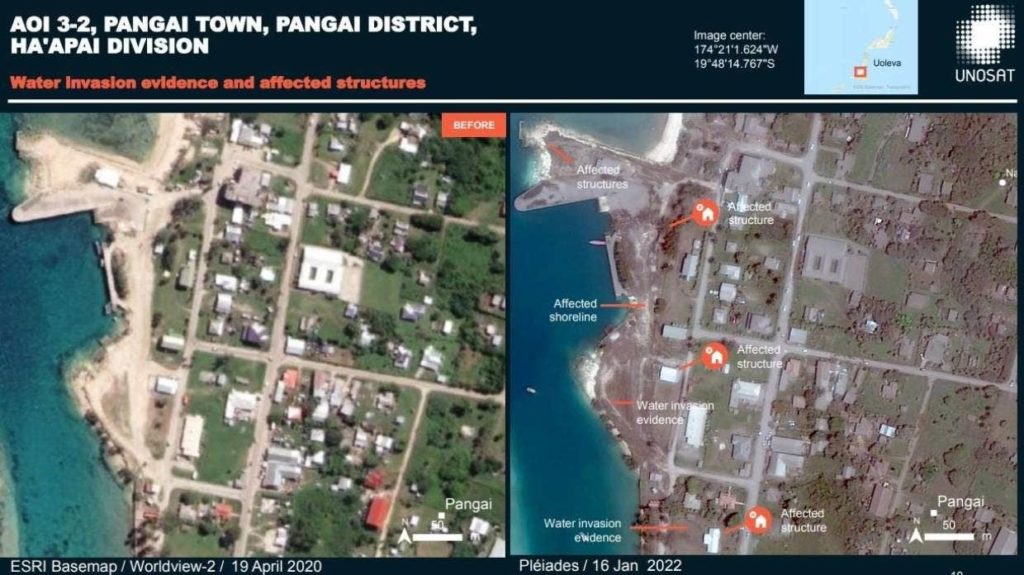
The Royal New Zealand Air Force P-3K2 Orion took a reconnaissance flight on January 17 to assess the damage from the air and releases images of ash-covered buildings, trees and beaches on the Tongan island of Nomuka.
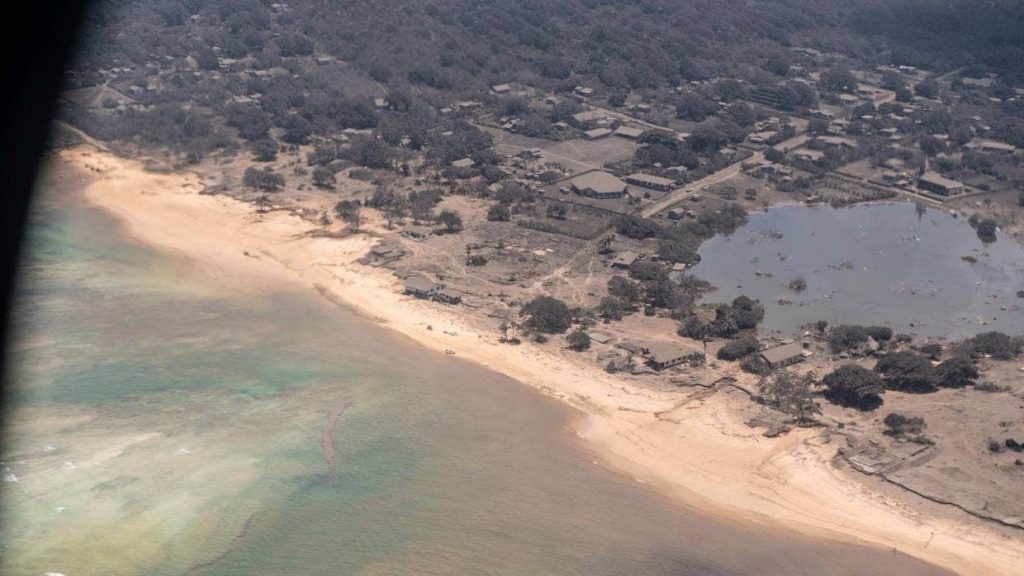
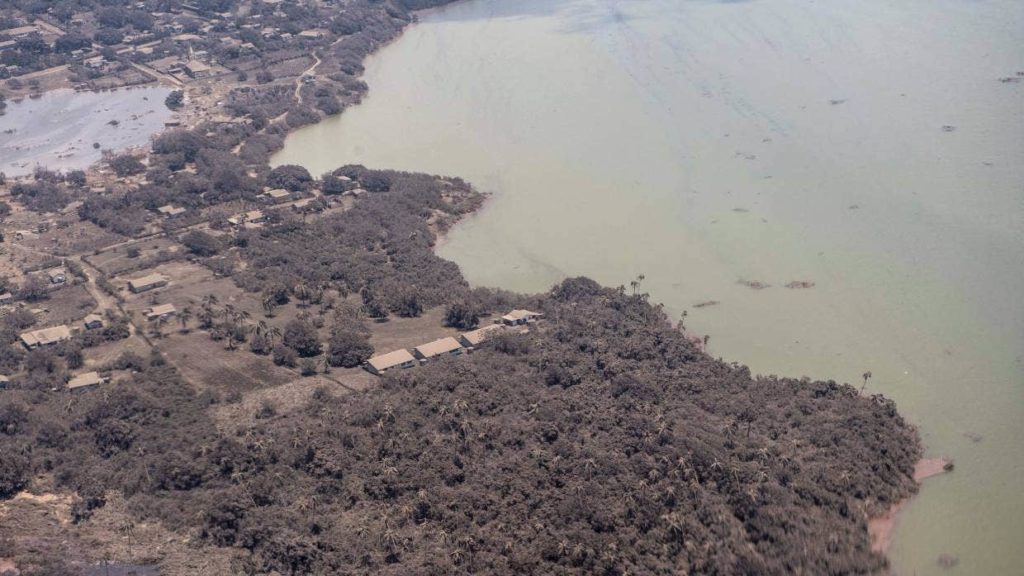
Aid agencies said the ash and smoke had prompted authorities to ask residents to wear masks and drink bottled water.
But with communication still yet to be restored, our picture of what it’s like on the ground is still developing.
Internet was cut off around 6pm on Saturday, three hours after the eruption.
Tonga gets its internet via an undersea cable from Fiji, which has likely been disturbed or damaged.
At a press conference on Monday morning Australian Foreign Minister Marise Payne said Australia was working to provide assistance to restore communications.
“If this is the case that there is damage to the submarine cable, then that is obviously a significant challenge for repair work,” she said.
“We’ll work closely with all of our partners to provide whatever assistance we can, including the commercial providers of the submarine cable and also to see what else is there to support in communications support.”
Australia sent a P-8 plane to assess the damage following the natural disaster on Saturday.
It arrived in Tonga on Monday morning, with crews still checking for damage to critical infrastructure.
New Zealand Prime Minister Jacinda Ardern has pledged an initial support package of $NZ500,000, which she said was a “starting figure”.
The explosion
Activity at the underwater volcano Hunga Tonga-Hunga Ha’apai began in late December with moderate eruptions. It had been active for the last 15 years and had previously erupted in 2009, 1988, 1937 and 1912.
At 3.10pm AEDT on Saturday, it erupted on a much larger scale. The explosion sent a plume of ash 20km into the air and 130km wide from a volcanic vent just above sea level.
The blast could be heard by residents of Fiji, New Zealand and even as far away as Alaska. In Fiji, 1,000km from the crater, it sounded like a loud thunder clap.
Tonga Volcano eruption heard from Lakeba, Fiji ???????????? #TongaVolcano pic.twitter.com/qc9ISL25QX
— Portia Dugu (@portiajessene) January 15, 2022
The force of the eruption has not yet been accurately measured, but it has been estimated it was equivalent to 1000 Hiroshima bombs.
The US Geological Survey estimated the eruption caused the equivalent of a magnitude-5.8 earthquake.
The eruption generated a tsunami that early videos have shown to cause damage in Tonga.
Some of the country’s 105,000 residents shared footage of the ash cloud, as well as large waves washing up onto shore.
This family were in church. They’d just finish having choir practice and the tsunami hit ????❤️???????? #Tsunami #Tonga #Oceania pic.twitter.com/j1poqeJ5Td
— Journalist Siraj Noorani (@sirajnoorani) January 15, 2022
Tsunami waves inundating the village of Mavana in Vanuabalavu- Lau following the volcano eruption in Tonga ???????? yesterday.
vid: Atelaite Cama. pic.twitter.com/NXIPACTEwy
— Jese Tuisinu (@JTuisinu) January 16, 2022
Satellites captured footage of the explosion from space, showing the monstrous blast and the ripple effect in the atmosphere.
The violent eruption a few hours ago of the Hunga Tonga-Hunga Haʻapai volcano captured by satellites GOES-West and Himawari-8. pic.twitter.com/PzV5v9apF6
— Wonder of Science (@wonderofscience) January 15, 2022
Water vapour imagery shows how the #eruption causes a ripple effect across the atmosphere. Absolutely enormous energy. #Tonga pic.twitter.com/POogVjnWit
— WeatherWatch.co.nz (@WeatherWatchNZ) January 15, 2022
Effects around the world
The wave swell caused by the eruption has travelled across the Pacific Ocean, resulting in tsunami warnings and damage to boats in New Zealand, Australia and the US.
#Tsunami #tutuka #NZ Heavy Damage in Tutukaka Harbour, east coast Northland, New Zealand near Whangarei. pic.twitter.com/fzmPTRedmC
— MichaelHowardMD (@MichaelHowardMD) January 15, 2022
In California, a tsumani surge washed up onto shore and flooded a carpark.
On Saturday, Bondi Beach was evacuated at 10.30pm after the Bureau of Meteorology said it had detected large waves and changes in atmospheric pressure, which can result in changed weather conditions.
The #shockwave from the Hunga Tonga–Hunga Haʻapai volcanic eruption travelled at over 1000km/h and was recorded as a noticeable jump in atmospheric pressure across #Australia. By the time it reached #Perth it had travelled almost 7000km! #Tonga pic.twitter.com/XZ2h4lWIHx
— Bureau of Meteorology, Western Australia (@BOM_WA) January 16, 2022
NSW SES closed beaches across the state, but the tsunami alerts for waters off Australia’s east coast have since been cancelled.
NSW SES said conditions would remain hazardous today and that everyone should avoid the water until there was more information.
What can we expect in the eruption aftermath?
Grace Legge, a senior meteorologist for Australia’s Bureau of Meteorology warned that we’re “not out of the woods,” as per the ABC.
She said underwater eruptions were much harder to predict than atmospheric weather patterns or earthquakes, and that volcanic activity could continue for weeks or months.
We can also expect to see pumice stone washing up on Australia’s east coast in the months ahead.
Pumice is volcanic rock that’s full of holes so can float.
We’ll be updating this story as more news breaks and communications from Tonga are restored. For now, if you live on the east coast, follow SES and surf lifesaving advice and stay away from the beach.



